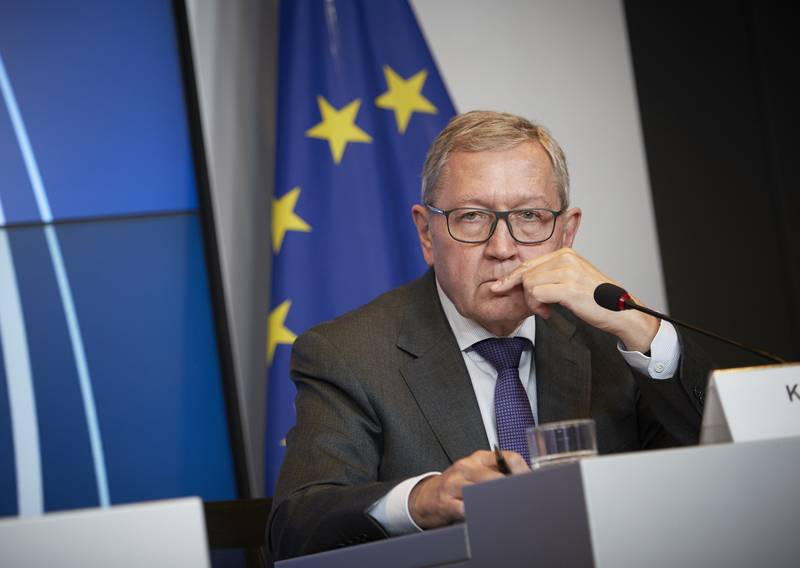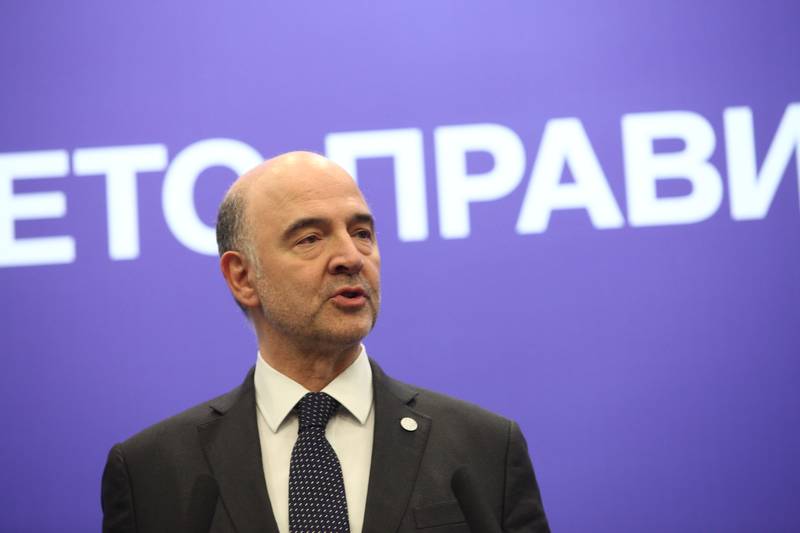Euro area has agreed on its European Stability Mechanism after 2013
Ralitsa Kovacheva, November 30, 2010
 Another working weekend for the European finance ministers, attempting to produce restful news for the markets on Sunday night. The outcome of their intensive work during the two days is solid: the programme for the Irish loan worth 85 billion euro had been approved together with the basic framework of the future crisis resolution mechanism - the so called European Stability Mechanism (ESM). To explain why the clarification of the details of this future euro area rescue fund is so important, some background is need.
Another working weekend for the European finance ministers, attempting to produce restful news for the markets on Sunday night. The outcome of their intensive work during the two days is solid: the programme for the Irish loan worth 85 billion euro had been approved together with the basic framework of the future crisis resolution mechanism - the so called European Stability Mechanism (ESM). To explain why the clarification of the details of this future euro area rescue fund is so important, some background is need.
Once upon a time ... there were risk-free investments
The crisis has destroyed many budgets (personal, corporate and national) and a big illusion - that investments in government debt are totally risk-free. The first victims of the collapse of this myth were Greece and Ireland. Fears that Spain and Portugal are next, enclose these countries into a vicious circle: on the one hand they need more funding to stabilise their banking systems and public finances, on the other - the financing becomes more expensive because of market fears that these states will not withstand the pressure, which in turn makes this prospect more real. The Financial Times quoted analysts saying that even Hungary, which two years ago investors would not have dared touch with a bargepole, is now considered safer than Ireland and Greece. Moreover, even Germany is no longer a country with zero risk as previously considered because it will have to pay to save the others.
Market fears were further catalyzed by the October European Council's decision that the private sector must share the responsibility in the future European rescue fund. Threatened to incur losses on investments previously considered risk-free, investors frantically began to sell thus making borrowing costs of the so called peripheral economies in the euro area record high. EU's attempts to explain that the new rules would apply after mid-2013 and would not be applied to any situation at the moment were also useless.
The uncertainty about the future crisis mechanism has stimulated speculations to the extent that the euro area countries literally forced Ireland to borrow money from the EU and the IMF, and now some say that Portugal is under pressure to "sacrifice" itself for Spain. Because if Portugal is relatively small, Spain is far from being that case, not to mention Italy, because the tentacles of rumours have already reached some of the largest countries in the eurozone.
In such an environment, although the plan was the mechanism to be discussed first at the European Council on December 16, work on it had to be accelerated and the ideas had to be made public in order to reassure the markets. The proposal for the permanent mechanism was made after an intense trialogue among Berlin, Paris and Brussels, the Financial Times wrote, apparently in order this not to seem as another Franco-German initiative. The fact is that some of the main ideas promoted by Germany, including “the primacy of politics" to markets after the words of German Chancellor Angela Merkel, are included in the proposal.
The European Stability Mechanism (ESM)
will be organised on the basis of the currently existing European financial stability facility (EFSF) and will provide financial support for euro area countries under the strict conditions existing at the moment, the statement of the finance ministers from the euro area (the so called Eurogroup) reads. The current rules, however, will be adapted so as to provide for the participation of private creditors on a case by case basis and in line with IMF's policies.
“In all cases, in order to protect taxpayers' money, and to send a clear signal to private creditors that their claims are subordinated to those of the official sector, an ESM loan will enjoy preferred creditor status, junior only to the IMF loan”, the Ministers stressed.
As so far, the financial support for eurozone countries will be based on a rigorous programme of economic and financial adjustment. When some assistance is  requested, the European Commission and the IMF, together with the European Central Bank, will carry out a “rigorous debt sustainability analysis”. Based on this analysis, Eurogroup ministers will decide to help through unanimity.
requested, the European Commission and the IMF, together with the European Central Bank, will carry out a “rigorous debt sustainability analysis”. Based on this analysis, Eurogroup ministers will decide to help through unanimity.
If, based on the analysis of the debt, the assistance requesting Member State is considered solvent, private lenders will be encouraged to maintain their exposure in accordance with international rules and in line with IMF practices. In case the country is considered insolvent, which is defined in the document as an “unexpected event”, it must negotiate a comprehensive restructuring plan with its private creditors, in accordance with IMF practices in order to restore its debt sustainability. “If debt sustainability can be reached through these measures, the ESM may provide liquidity assistance”, the statement reads. It is not clear, however, if there are conditions and what they are, when the ESM cannot provide assistance and what happens then with the Member State concerned.
 ECB President Jean-Claude Trichet said he was happy with the decision. He specifically noted that the proposed framework is completely in line with the IMF practice at a global level - the same assessment of debt sustainability, the same private sector participation and “no involvement ex-ante in the form of restructuring or rescheduling”, but only if it is considered that the country is in an unsustainable debt position.
ECB President Jean-Claude Trichet said he was happy with the decision. He specifically noted that the proposed framework is completely in line with the IMF practice at a global level - the same assessment of debt sustainability, the same private sector participation and “no involvement ex-ante in the form of restructuring or rescheduling”, but only if it is considered that the country is in an unsustainable debt position.
“In order to facilitate this process, standardized and identical collective action clauses (CACs) will be included, in such a way as to preserve market liquidity, in the terms and conditions of all new euro area government bonds starting in June 2013.” The compliance with the provisions in the US and Britain is explicitly emphasized, including aggregation clauses allowing all debt securities issued by a Member State to be considered together in negotiations. According to the Eurogroup, “this would enable the creditors to pass a qualified majority decision agreeing a legally binding change to the terms of payment (standstill, extension of the maturity, interest-rate cut and/or haircut) in the event that the debtor is unable to pay”.
Member States, in turn, will seek to extend the maturity of their new bond emissions in the medium term to avoid refinancing peaks. “The ESM will complement the new framework of reinforced economic governance, aiming at an effective and rigorous economic surveillance, which will focus on prevention and will substantially reduce the probability of a crisis arising in the future”, the statement reads. It is again stressed that any involvement of the private sector according to these terms and conditions will not start before mid-2013.
In order to create the ESM, treaty changes are required. These have to be proposed by the President of the European Council Herman van Rompuy at the European Council on 16 December. According to the announcement of the Eurogroup, he has indicated that his proposal for limited treaty changes would reflect the finance ministers' decisions.
Ireland will receive 85 billion euro
Within a three-year programme, Ireland will receive financial assistance of 85 billion euro (17.5 billion of which will be provided by Ireland itself) to strengthen and restructure its banking system, to achieve fiscal stability and to correct the excessive deficit by 2015, and to implement growth enhancing reforms, primarily in the labour market. Obviously, in the course of negotiations, Ireland has been given another year to adjust its excessive deficit – in Dublin’s 4 years budgetary strategy the deadline was 2014.
The package consists of 10 billion euro for immediate recapitalisation measures, 25 billion to support banking system and 50 billion for the financial needs of the budget. Half of the money for banking system support (17.5 billion euro) will be financed by an Irish contribution through the Treasury cash buffer and investments of the National Pension Reserve Fund. The IMF contribution is 22.5 billion euro, EU's (EFSM and EFSF) - 45 billion euro, including bilateral loans from the United Kingdom (3.8 billion euro), Sweden (600 million euro) and Denmark (400 million euro). Due to the various sources of funds, the interest rates of the individual loans will vary too but the average level will be around 6 percent, the European Commissioner for Economic and Monetary Affairs Olli Rehn explained. This is much more favourable than a market rate of 9%, upon which the country can ensure funding at the moment.
The maturity of the loan is after 7 and a half years. In this sense, the Eurogroup has announced that it “will rapidly examine the necessity of aligning the maturities of the financing for Greece to that of Ireland”. This means that Greece will have additionally four and a half years to repay its loan of 110 billion euro to the euro area countries and the IMF. According to Mr Rehn, this should remove the last doubts about Greece's ability to pay its debts. The Irish rescue plan is only "one part of the systemic response" to the crisis, Olli Rehn said, "stress tests for European banks will  form the second part of it”. The criticism of the first stress tests proved partially justified because, despite positive results, the problems in the banking sectors of Ireland and Spain had turned out to be quite serious.
form the second part of it”. The criticism of the first stress tests proved partially justified because, despite positive results, the problems in the banking sectors of Ireland and Spain had turned out to be quite serious.
Spain and Portugal
The situation in Spain and Portugal had also been discussed by EU finance ministers. They were satisfied with the announced restructuring measures in the banking system of Spain, particularly in terms of regional savings banks, but they wanted the measures to be set in the medium-term budgetary strategy of the country. For Portugal, the Ministers were satisfied that the country had finally adopted its 2011 budget with the planned spending cuts and reform measures in the transport and health sectors. Ministers expect these measures to be set in a broader structural reforms programme.
Now it remains to be seen what impact will these decisions have on the markets. However, we can hardly expect miracles because the vicious cycle has not yet been broken. The confidence in Spain and Portugal has dropped almost to the minimum, which dooms them to become bailout candidates. And the bailout process itself begins to seem like a vicious cycle driven by a self-fulfilling prophecy. Furthermore, the question who actually are we saving (because we, the taxpayers, are paying the bill) seems more reasonable. While in the proposed permanent crisis mechanism that question has partly found an answer, the problem is that mid-2013 seems too far away. Especially given the speed of falling of the euro area domino.
 Klaus Regling | © Council of the EU
Klaus Regling | © Council of the EU Mario Centeno | © Council of the EU
Mario Centeno | © Council of the EU Mario Centeno | © Council of the EU
Mario Centeno | © Council of the EU Angela Merkel, Emmanuel Macron | © Council of the EU
Angela Merkel, Emmanuel Macron | © Council of the EU Benoit Coeure | © Council of the EU
Benoit Coeure | © Council of the EU Pierre Moscovici | © Council of the EU
Pierre Moscovici | © Council of the EU